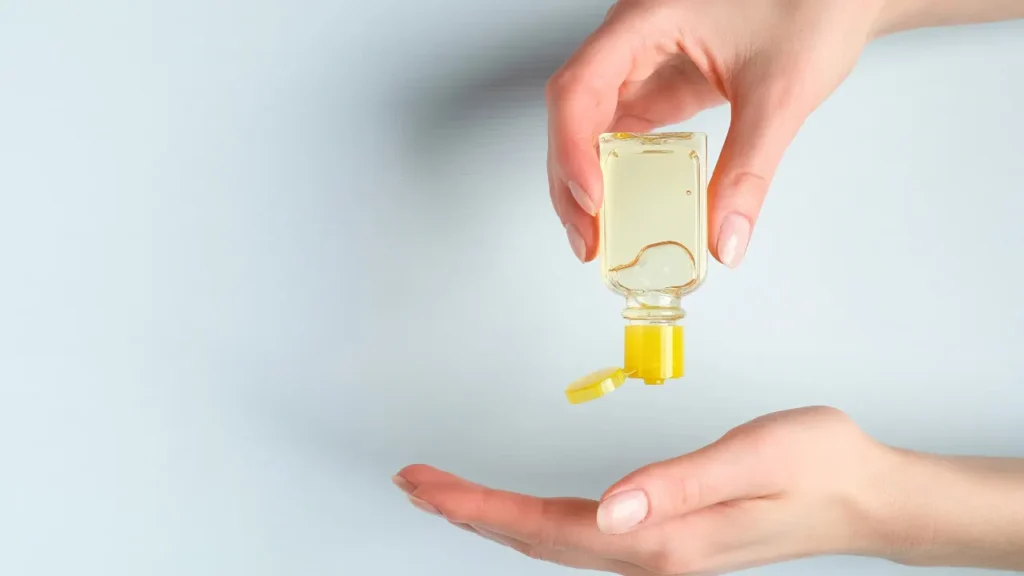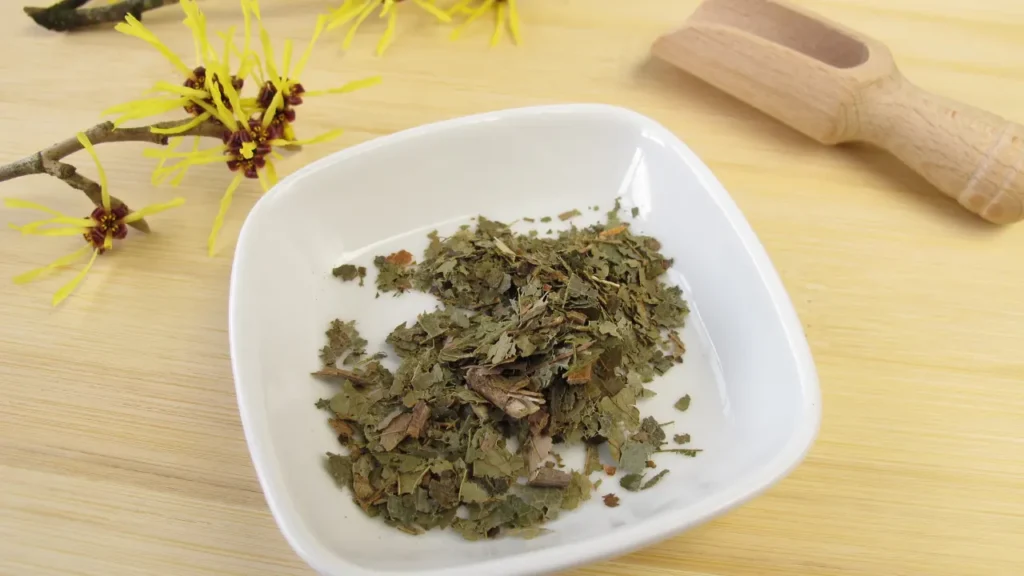Witch hazel (Hamamelis virginiana) is a North American deciduous plant recognized for its medicinal effects and use in traditional medicine. Its leaves, bark, and twigs contain a high concentration of bioactive chemicals, making it a popular choice for a variety of health uses. The chemical composition of witch hazel, its health benefits, recommended dosage, potential adverse effects, and substance interactions are all discussed in this article. It also emphasizes the best practices for using this natural supplement responsibly.
You May Also Like:
Nordic Naturals Omega-3 Phospholipids: Evaluation of a Leading Brain Health Product
Bladderwort: Benefits, Dosage, Side Effects, Drug Interactions, and Other Important Information
Witch Hazel: Benefits, Dosage, Side Effects, Drug Interactions, and Other Important Information is an original (NootropicsPlanet) article.
Nature of Witch Hazel
Witch hazel (Hamamelis virginiana) is a North American deciduous shrub that grows mostly in the eastern United States and southeastern Canada. It can grow to be 10-25 feet tall and has oval-shaped leaves with a serrated border. During the fall season, the plant produces fragrant yellow flowers with four ribbon-like petals. Witch hazel is extremely adaptable, growing in a wide range of soil types and weather circumstances. The plant is recognized for its amazing tenacity since it can resist severe weather and even recover after substantial harm.
Health Benefits of Witch Hazel
Witch hazel’s complex chemical composition enables it to provide a wide range of health advantages, including:
1) Skincare
Witch hazel has long been used to treat a variety of skin ailments. Due to the high tannin concentration, it has astringent characteristics that allow it to constrict blood vessels and tighten the skin. This effect can reduce inflammation and redness, making it useful in the treatment of acne, eczema, and psoriasis. Witch hazel has also been found to hasten wound healing by stimulating the contraction and re-epithelialization of wounded tissue.
2) Antioxidant and Anti-inflammatory Effects
Witch hazel’s flavonoids and phenolic acids have strong antioxidant and anti-inflammatory properties. These chemicals act as free radical scavengers, lowering oxidative stress and preventing cellular damage. Inflammation plays a crucial role in many chronic diseases, and witch hazel’s anti-inflammatory properties could help manage ailments including arthritis and inflammatory bowel disease.
3) Antibacterial Activity
Antimicrobial activities of witch hazel have been demonstrated against a variety of pathogens, including bacteria, fungi, and viruses. Its volatile oils, particularly eugenol and hexenol, damage microbe cell membranes which results in cell death. Hence, witch hazel is a beneficial natural treatment for skin infections and a potential alternative to standard antibiotics.
4) Hemorrhoid Treatment
Witch hazel’s astringent qualities are especially beneficial in the treatment of hemorrhoids. As mentioned, witch hazel can constrict blood vessels, lowering swelling and irritation when applied topically. Its analgesic effects also aid in the relief of pain and irritation caused by hemorrhoids.

Chemical Composition of Witch Hazel
The medicinal benefits of witch hazel are ascribed to its high phytochemical content. Tannins, flavonoids, saponins, essential oils, and phenolic acids are important ingredients. The proanthocyanidins and hydrolyzable tannins, primarily hamamelitannin and hamamelose, are the most abundant tannins in witch hazel. These chemicals are responsible for the astringent and antioxidant effects of witch hazel. Flavonoids like kaempferol and quercetin have anti-inflammatory and antioxidant activities, while volatile oils like eugenol and hexenol help the plant’s antibacterial characteristics.
Physiological Mechanism of Action of Witch Hazel
Witch hazel’s medicinal actions are mediated by a number of bioactive compound-related pathways. To deliver health benefits, these chemicals interact with various physiological systems in the body and brain.
1) Astringent Properties
The tannin component of witch hazel, which contains proanthocyanidins and hydrolyzable tannins, is chiefly responsible for its astringent qualities. Tannins have the ability to bind to proteins and other macromolecules and cause them to precipitate and contract. When used topically, the tannins constrict blood vessels and tighten the skin, reducing inflammation and redness.
2) Antioxidant and Anti-inflammatory Properties
Witch hazel’s flavonoids and phenolic acids have potent antioxidant and anti-inflammatory activities. These chemicals limit the formation of pro-inflammatory molecules such as cytokines and prostaglandins by neutralizing free radicals. Witch hazel can help protect cells from damage and reduce the symptoms of different inflammatory illnesses by lowering oxidative stress and inflammation.
3) Antibacterial Activity
The antibacterial effects of witch hazel are mostly attributed to volatile oils such as eugenol and hexenol. These chemicals increase cell permeability and cause irreversible damage which leads to cell death. This antimicrobial activity can help treat skin infections and, in some cases, may be used instead of traditional antibiotics.
4) Hemorrhoid Treatment
Witch hazel’s astringent properties are especially effective in the treatment of hemorrhoids as it relieves the swelling and pain associated with hemorrhoids.


Optimal Dosage of Witch Hazel
The recommended dosage of witch hazel is determined by the supplement’s type and the ailment being treated. A 10-20% witch hazel solution or ointment can be administered to the afflicted area 2-3 times daily for topical uses such as skin problems and hemorrhoids. Due to the high tannin content, witch hazel may cause gastrointestinal irritation. Hence, oral administration of witch hazel, such as in the form of tea or capsules is less common. It is recommended to ingest no more than 1-2 grams of witch hazel per day if taken orally.
Side Effects of Witch Hazel
Most people regard witch hazel supplementation to be safe as a topical application. Some people, however, may develop adverse effects such as skin irritation, redness, or allergic responses. These side effects are frequently caused by overuse or sensitivity to certain chemicals in witch hazel. To reduce the potential for side effects, a patch test should be performed before applying witch hazel to a larger area of skin. Prolonged usage of witch hazel may cause contact dermatitis in rare circumstances.
Because of its high tannin content, oral ingestion should be treated with caution. Taking too much witch hazel can cause gastrointestinal irritation, nausea, vomiting, and constipation. Witch hazel should be avoided by pregnant and lactating women because there is inadequate evidence to support its safety during pregnancy and lactation.


Potential Substance Interactions with Witch Hazel
While there have been no well-documented interactions between witch hazel and pharmaceutical drugs, it is important to consider the possibility of interactions, especially when taking witch hazel orally. The astringent qualities of witch hazel may interfere with the absorption of some drugs, including antacids, H2 blockers, and proton pump inhibitors. Furthermore, witch hazel’s anti-inflammatory and antioxidant properties may interact with medications with similar effects, such as nonsteroidal anti-inflammatory drugs (NSAIDs) and corticosteroids.
Before using witch hazel in conjunction with pharmaceuticals or other supplements, speak with a healthcare expert who can provide individualized recommendations based on your specific health problems and needs.
Best Responsible Uses of Witch Hazel
Follow these guidelines to ensure the safe and effective use of witch hazel:
1) Select High-Quality Products
Choose items from reputed manufacturers that list the concentration of active ingredients like tannins and flavonoids. Look for items that do not contain any additives, preservatives, or artificial colors.
2) Follow the Dosage Recommendation
Follow the dosing instructions for the individual form of witch hazel and the ailment being treated. Do not exceed the recommended daily allowance because doing so may increase the chance of adverse effects.
3) Conduct a Patch Test
Perform a patch test before applying witch hazel topically to ensure you do not have an allergic reaction to the product. Apply a small quantity to a hidden region of skin and wait 24 hours to check for irritation or allergy symptoms.
4) Consult a Medical Professional
Before using witch hazel, consult with a healthcare practitioner, especially if you are pregnant, breastfeeding, or have pre-existing health concerns. Based on your unique needs, they can provide personalized advice on the safe and effective usage of witch hazel.
Witch Hazel:
Conclusion
In conclusion, Witch Hazel is a deciduous plant that is recognized with a rich history of medicinal use in skincare, offering relief for various skin conditions such as acne, irritation, and inflammation. Beyond skincare, Witch Hazel can address hemorrhoids and insect bites due to its anti-bacterial and anti-inflammatory properties. While the potential benefits of Witch Hazel are intriguing, it is still crucial for you to consult with healthcare professionals before integrating it into your wellness routine. Always keep in mind that when embracing the holistic approach of herbal remedies, requires informed decisions and the guidance of medical experts to ensure safe and effective usage.


References:
- Witch Hazel: Uses, Side Effects, Interactions, Dosage, and Warning. Retrieved from: https://www.webmd.com/vitamins/ai/ingredientmono-227/witch-hazel
- Benefits of Witch Hazel for Skin: How to Use, Risks, and More. Retrieved from: https://www.healthline.com/health/witch-hazel-for-face
- 7 Uses for Witch Hazel. Retrieved from: https://www.medicalnewstoday.com/articles/318398
- Evaluation of the antioxidant, anti-inflammatory, and anticancer activities of Eucalyptus globulus and Thymbra spicata plant extracts in human cells. Retrieved from: https://www.ncbi.nlm.nih.gov/pmc/articles/PMC2789773/
Important Note: The information contained in this article is for general informational purposes only, and should not be construed as health or medical advice, nor is it intended to diagnose, prevent, treat, or cure any disease or health condition. Before embarking on any diet, fitness regimen, or program of nutritional supplementation, it is advisable to consult your healthcare professional in order to determine its safety and probable efficacy in terms of your individual state of health.
Regarding Nutritional Supplements Or Other Non-Prescription Health Products: If any nutritional supplements or other non-prescription health products are mentioned in the foregoing article, any claims or statements made about them have not been evaluated by the U.S. Food and Drug Administration, and such nutritional supplements or other health products are not intended to diagnose, treat, cure, or prevent any disease.
